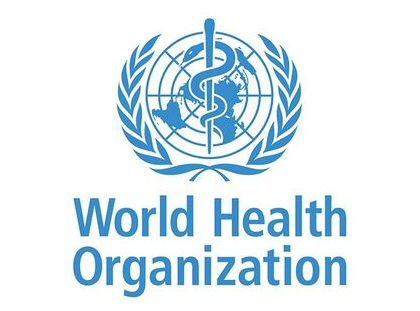Aim to Reach ‘Lofty Goal’ of 80% of Dialysis Done at Home

Marlene Busko
May 24, 2022
The rate of home dialysis in patients with kidney failure in the United States — 7% each in Black and Latinx patients and 9% in White patients — is low compared with the “lofty” target of 80% for 2025 stated in an executive order issued in 2019.
Thus, it is timely to identify barriers to home dialysis — which includes hemodialysis and peritoneal dialysis — in all patients, but in these minorities specifically, and offer potential solutions, which is what Katherine M. Rizzolo, MD, and colleagues have done in an invited feature article in the Journal of the American Society of Nephrology.
“Despite the higher incidence and prevalence of kidney disease in Black and Latinx communities, home dialysis therapies are disproportionately underused,” they write.
This isn’t completely explained by geographic, demographic, and clinical differences, they note, but they do add that many members of ethnic minorities who have kidney failure face environmental, social, healthcare system, and healthcare policy barriers to receiving home dialysis.
Goal Is Likely Unreachable
The Advancing American Kidney Health (AAKH) executive order, signed by former President Donald J. Trump in 2019, set a goal that by 2025 80% of patients with new kidney failure should be started on home dialysis or receive a kidney transplant — instead of being initiated on in-hospital hemodialysis.
This is a “lofty goal,” Rizzolo, from the University of Colorado Anschutz School of Medicine, Aurora, told Medscape Medical News in an interview.
“I agree this seems unreachable,” she said.
The 80% target comes from success in Hong Kong, she noted. As described in a recent review, Hong Kong “has the highest peritoneal dialysis patient proportion around the world, attributed to [a] successful ‘peritoneal dialysis first’ (PD-First) policy” introduced in 1985 to cut costs.
In 2021, 74% of patients on dialysis in Hong Kong were on peritoneal dialysis.
They cite another great initiative, in New Zealand, in the form of a scheme for Indigenous communities whereby multiple patients have home hemodialysis in a community house.
Better Training for Nephrology, More Units Offering Home Dialysis
Healthcare system barriers to home dialysis for Black and Latinx patients with kidney failure include later referral to a nephrologist, less predialysis nephrology care, inadequate patient-centered education about dialysis types, and higher rates of unplanned dialysis initiation compared with non-Latinx White patients with kidney failure, the perspective authors explain.
“Lack of predialysis care from a nephrologist is probably the number one barrier to being initiated on home dialysis,” Rizzolo said.
Next, because home dialysis is “relatively underutilized in the US,” Rizzolo noted, “a lot of nephrology fellows graduate with feeling like they are not really prepared to prescribe it…A lot of their education is in units that don’t offer home dialysis.”
Although certain “institutions offer urgent peritoneal dialysis, meaning they will put in a catheter when a patient comes into the hospital and start it within a couple of days, even within hours,” she continued, “that’s not available everywhere.”
Without catheter access, patients are more likely to start in-hospital dialysis and not likely to switch to home therapy later.
“We Could Be More Innovative”
At the policy level, barriers to home dialysis include payment models that disproportionately penalize healthcare systems that provide this treatment to disadvantaged racial and ethnic minorities.
Environmental and social barriers to home dialysis include lack of home space to store dialysis supplies; lack of social or caregiver support; lack of health insurance; and/or inability to pay for out-of-pocket costs for this treatment; living far from a center that provides home dialysis; and poor health literacy.
To break down barriers to home dialysis for disadvantaged Black and Latinx patients, “we could be more innovative,” Rizzolo said.
The commentary authors provide several examples and suggestions.
Healthcare systems in Canada, Denmark, and France provide reimbursement for assisted peritoneal dialysis (done at home with the assistance of a trained caregiver), which addresses social isolation, lack of caregiver support, and lack of transportation.
Telehealth appointments could also be an option for patients with adequate Internet access and technological proficiency. Paid home visits from a trained professional could help patients who live far from a home dialysis clinic.
Reimbursement for days off work for training or for travel costs to a home dialysis clinic would also help overcome barriers to care. Mentors, who share patients’ lived experiences, could also help as they have been shown to improve patient education, motivation, and quality of life in other health conditions.
Nephrologists, too, need to become confident in their knowledge of home dialysis therapies to be able to offer the modality.
It is a myth that patients with kidney failure who live in disadvantaged communities are not good candidates for this treatment, the commentary authors note.
Patient education must be provided in a culturally and language-concordant way. Providers should receive training to provide culturally responsive care and use language interpreters for patients with limited English proficiency.
Urgent-start peritoneal dialysis programs could be more widely implemented.
Payment models should address socioeconomic disadvantages.
Rizzolo has reported no relevant financial relationships. Disclosures for the other authors are listed with the article.
J Am Soc Nephrol. Published online April 19, 2022. Commentary
For more diabetes and endocrinology news, follow us on Twitter and Facebook.
Credits:
Lead image: Calvin L. Leake/Dreamstime
Medscape Medical News © 2022 WebMD, LLC
Send comments and news tips to news@medscape.net.
Cite this: Aim to Reach ‘Lofty Goal’ of 80% of Dialysis Done at Home – Medscape – May 24, 2022.
Recommended Posts

Dialysis Complications of Chronic Renal Failure
17/Jul/2022

Global atlas of medical devices
27/Apr/2021



